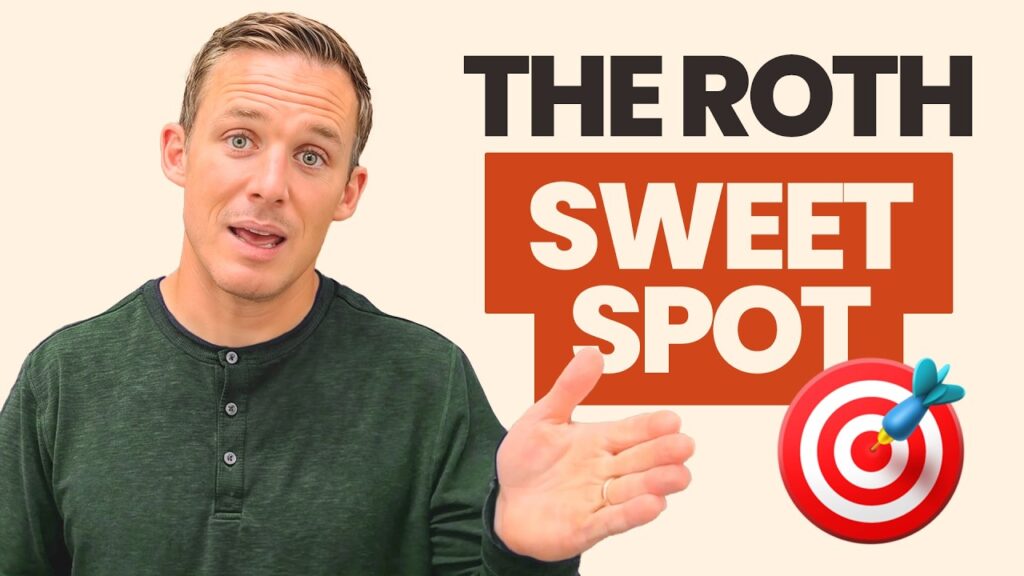How to Use Your Roth IRA in Retirement

One of the most common questions I get from retirees is: When should I start taking money from my Roth IRA? It seems like a simple question—but it opens the door to one of the most powerful tools in retirement planning: tax control.
Used well, a Roth IRA is more than just a tax-free piggy bank. It’s a shield against future tax hikes, a safety net for high-expense years, and even a legacy-planning powerhouse. But getting it right means thinking beyond just today’s income—it means projecting your entire retirement path.
Let me walk you through how we think about Roth IRAs strategically—from tax brackets and RMDs to timing and inheritance.
1. It’s Not “Roth First” or “Roth Last”—It’s Roth Smart
A common rule of thumb is to withdraw from traditional IRAs first, then tap into your Roth IRA later in retirement. The idea is to use pre-tax money while your tax bracket is low and let the Roth grow longer, tax-free.
But like most rules of thumb, this one has exceptions.
One listener asked about using Roth funds in years with large expenses. That’s actually a great tax control tactic. By using Roth withdrawals in big-spend years, you can avoid accidentally bumping into a higher tax bracket.
So, it’s not about Roth first or last—it’s about strategically timing withdrawals based on your income picture each year.
2. Know Your Tax Planning Window
One of the most underused tools in retirement planning is a long-term tax projection.
Why? Because many retirees don’t realize how much their tax rate might jump later—especially when Required Minimum Distributions (RMDs) and Social Security kick in.
Let’s say you retire at 62, and you’re not taking Social Security until 70. That gives you 8 years of lower income—a golden “tax planning window.” In this time, you can take advantage of lower brackets, maybe convert some traditional IRA money to Roth, and set yourself up for smoother taxes later.
Compare your current 22% bracket with a projected 32% bracket once RMDs start, and the benefits of planning now become crystal clear.
3. Watch Out for RMD Surprises
Starting at age 73 (or 75, depending on your birth year), you’ll be required to withdraw from traditional IRAs whether you need the income or not.
And that withdrawal can be big.
- A $1 million IRA? Your first RMD will be about $40,000.
- A $5 million IRA? You’re looking at close to $200,000 a year—like it or not.
That income could kick you into a much higher tax bracket, increase your Medicare premiums, and even affect the taxation of your Social Security. To avoid this, we often recommend Roth conversions during low-income years, or—if RMDs won’t be an issue—spending Roth dollars earlier to balance things out.
4. Blend Withdrawals to Smooth Out Taxes
One smart tactic we use is blending income sources to stay within lower tax brackets.
Let’s say your spending goal is $80,000 this year. If you pull $63,000 from a traditional IRA and $17,000 from your Roth IRA, you stay within the 12% tax bracket. That’s intentional tax efficiency—what we call bracket management.
Balancing withdrawals across IRAs, Roths, brokerage accounts, and even cash gives you flexibility and control—and every percent matters.
5. Roth IRAs and Your Legacy
If you’re thinking about leaving money to heirs, Roth IRAs offer big advantages—but they’re not always the best move.
If your heirs will be in lower tax brackets, it might make more sense for you to use the Roth funds during your lifetime and leave them traditional IRA money. On the other hand, if your heirs are high earners, a tax-free Roth inheritance could be a gift that keeps on giving.
For charitable giving, Qualified Charitable Distributions (QCDs) are another great strategy. You can give up to $100,000 a year directly from a traditional IRA once you’re over 70½—satisfying RMDs while avoiding taxes.
6. Think of Your Roth as “Tax Insurance”
Here’s a great way to think about Roth IRAs: they’re like term life insurance for your tax bill.
You hope you never need to use them because your future tax rates stay low—but if tax rates rise? Your Roth gives you tax-free access when you need it most.
That flexibility is worth its weight in gold. It’s why we encourage clients to build up Roth balances while they’re still working or early in retirement, even if they don’t touch them for years.
7. The Big Picture: A Flexible Roth Strategy
There’s no one-size-fits-all Roth strategy. But here’s a simple framework to guide your decisions:
- Early Retirement, Low Taxes: Convert traditional IRA funds to Roth to “fill up” low brackets.
- Mid-Retirement, RMD Prep: Manage your RMD projections and consider blending withdrawals.
- Late Retirement: Use Roth funds to avoid bracket creep, support big purchases, or meet legacy goals.
- Charitable Goals: Use QCDs for tax efficiency, especially if Roth funds aren’t a priority.
Ultimately, Roth IRAs are one of the most powerful tools in the retirement toolbox—but only if used thoughtfully. With the right plan, they can offer tax savings, flexibility, and peace of mind for decades to come.
You should always consult a financial, tax, or legal professional familiar about your unique circumstances before making any financial decisions. This material is intended for educational purposes only. Nothing in this material constitutes a solicitation for the sale or purchase of any securities. Any mentioned rates of return are historical or hypothetical in nature and are not a guarantee of future returns.
Past performance does not guarantee future performance. Future returns may be lower or higher. Investments involve risk. Investment values will fluctuate with market conditions, and security positions, when sold, may be worth less or more than their original cost.






